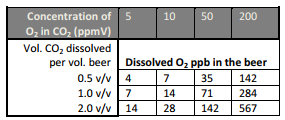BruceH
Mostly Retired
I mostly brew lagers. I've only been doing it for 1.5 years and I'm learning all the time.
Temp control was a big leap in beer quality and I feel that spunding is another leap. I've been brewing in a bucket for 3-4 days, then transferring to a keg with spunding valve set to 2.5 volumes of co2 for whatever temp the rest of the fermentation will be.
The results are the best lager beers I've made to date.
Anyone else?
Temp control was a big leap in beer quality and I feel that spunding is another leap. I've been brewing in a bucket for 3-4 days, then transferring to a keg with spunding valve set to 2.5 volumes of co2 for whatever temp the rest of the fermentation will be.
The results are the best lager beers I've made to date.
Anyone else?































![Craft A Brew - Safale BE-256 Yeast - Fermentis - Belgian Ale Dry Yeast - For Belgian & Strong Ales - Ingredients for Home Brewing - Beer Making Supplies - [3 Pack]](https://m.media-amazon.com/images/I/51bcKEwQmWL._SL500_.jpg)



























